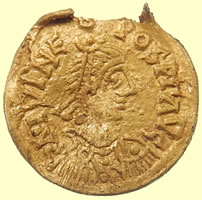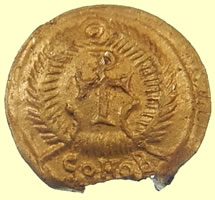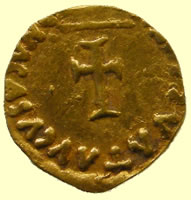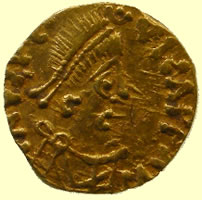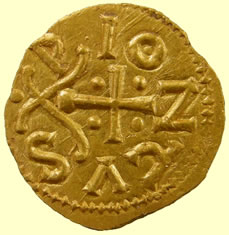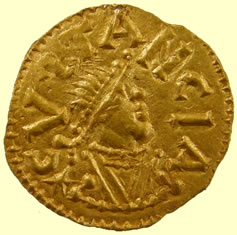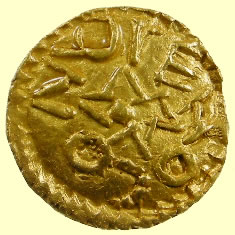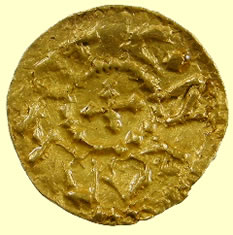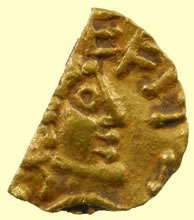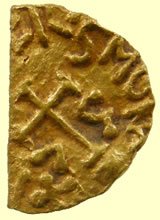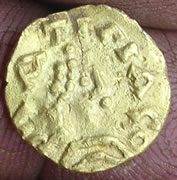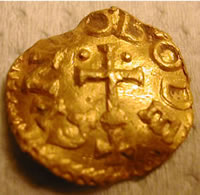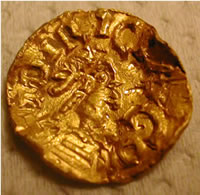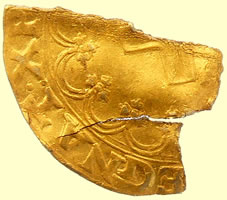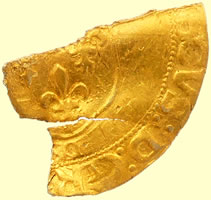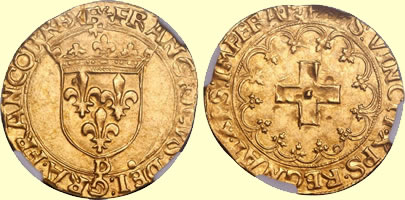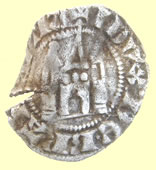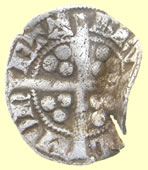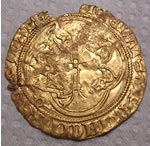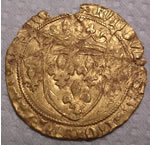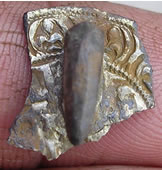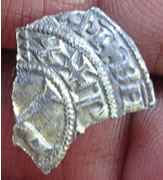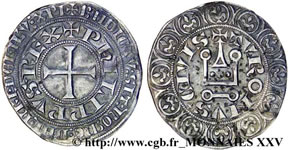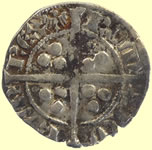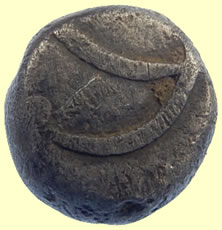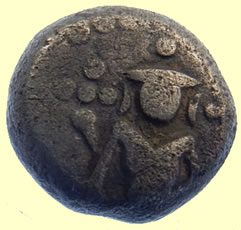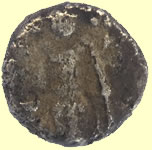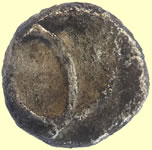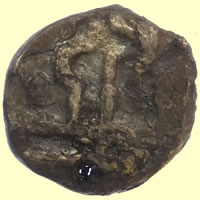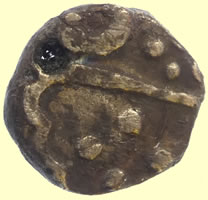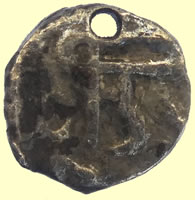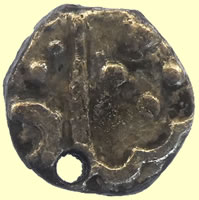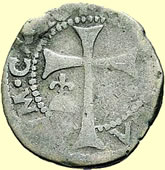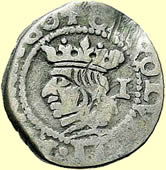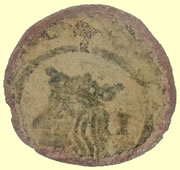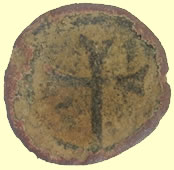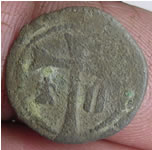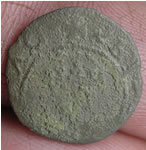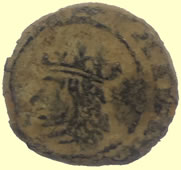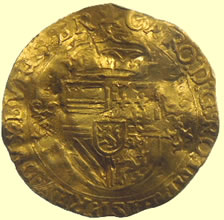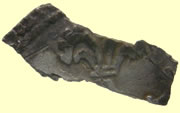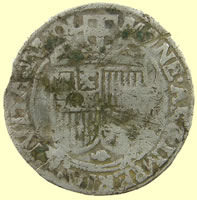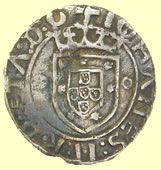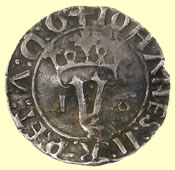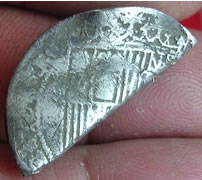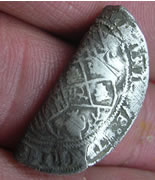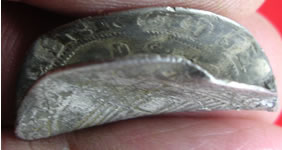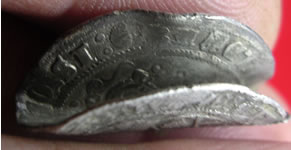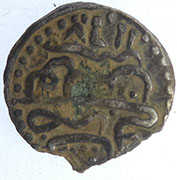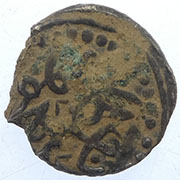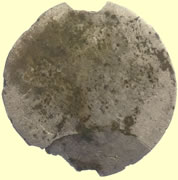

Metal detecting holidays in England with the World's most successful metal detecting club.20 years plus.
Twinned with Midwest Historical Research Society USA.
|
Foreign hammered coins - excludes Roman, Scottish and Irish Venetian silver coins moved to their own page Roman hammered gold has its own page
Unique ID: FASAM-310211 Visigoths in Gaul Object type certainty: Certain Gold tremissis, attributed to the Visigoths in Gaul, copying a coin of the Roman emperor Julius Nepos (AD 474-5) struck at Rome, dating to c. AD 475-500. Obverse: D N IVL NE - POS P F AVG; Pearl-diademed, draped and cuirassed right, with probable diadem above bust. Reverse: Staurogram in Wreath. Mintmark: COMOB. RIC X, p. 461, no. 3766var. RIC 3766 has a cross above the bust. Incomplete, possibly because a mount has been removed.
https://finds.org.uk/database/artefacts/record/id/710744 You will see I have re-identified the coin. I was wondering if you could provide me with a find-spot and finders name. With best wishes, Dr Sam Moorhead
|
||||||||||||||||||
Austria |
|||||||||||||||
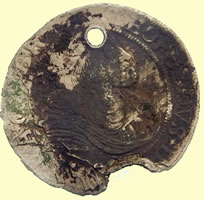 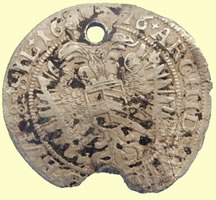 |
|||||||||||||||
1676 billion silver coin XV Kreuzer (15 Kreuzer) Breslau 1676 MMW RDR Leopold I.Austria, Leopold I (Hogmouth) Obv LEOPOLDVS DG RI SAG H B REX Rev 1676 ARCH ID AVS BVR 82 SIL |
|||||||||||||||
Belguim |
|||||||||||||||
Flanders, Philip 'de Stoute' (The Bold), 1384-1404, Gold Noble, (Noble d'Or), in the style of the English Coinage
Lowlands. Duchy of Brabant. Jean III, the Triumphant. 1312-1355. AR esterlin (18 mm, 1.41 g). Brussels, from 1317/8 onward. + I DVX DE BRABANTIA, castle with two towers / MON-ETA BRV-XEL, cross cantonnée with trefoil of pellets in each quadrant. Silver "esterlin" from Brabant's duchy 17.99mm, 1.19g |
|||||||||||||||
Denmark |
|||||||||||||||
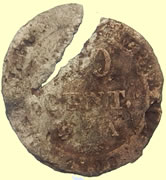 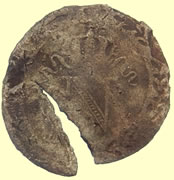 |
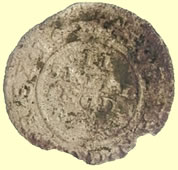 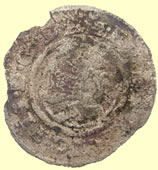 |
||||||||||||||
| 18thC Danish 10 Cents milled billion silver coin | 1651 Danish billion silver coin - Obv FRIDERIC.III.D.G.DAN (Lion facing left) Rev NOR.VAN.GOT.REX.1667 II SKILLING DANSK 0.72g |
||||||||||||||
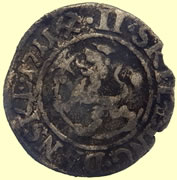 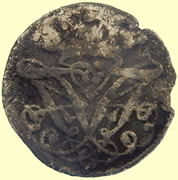 |
 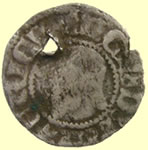 |
||||||||||||||
1711 Danish 2 skilling milled silver billion coin Obv X. II.SKILLING.DANSKE 1711 |
It is a sterling (3 penning) of Naestved Mint under Eric of Pommerania ca. 1403-1412/1413. Obv legend- (star)ERICVS:REX:d:S:R. Rev legend- (star)MONETA NESTWED. Obverse features a crown, reverse features a cross. Note- The witten/hvid of 4 penning has a flower versus a star. Your coin reference is Galster #4." and another... "The king's title, REX D S N, alleges that Eric was the king of Denmark, Sweden, and Norway (the three countries were united at that time). But that wasn't entirely true. Margaret I, who adopted him as her son, ruled those three countries from 1376 until her death in 1412. Eric was crowned king in 1397, but mainly to get around the problem that Denmark did not allow female sovereigns. (Margaret had had acted as "regent" prior to that time.) But despite his title, she actually ran things right up to her death in 1412. Just an oddity of history." |
||||||||||||||
 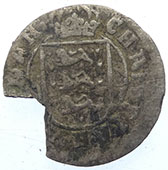 |
|||||||||||||||
| 1677 Denmark 2 Skilling silver coin | |||||||||||||||
France - milled coins from 1645 |
|||||||||||||||
Louis X1 (1461-83) Ecu d'or, 28mm, 1re emission 31/12/1461. Obv: LVDOVICVS:DEI:GRA:FRANCOR:REX, ecu de France crowned, bounded by deux lis crowned. Rev: XPS:VINCIT:XPS:REGNAT:XPS:IMPGRAT, "croix feuillue avec quadrilobes en coeur, accoste de quarte cournelles, dans un quadrilobe." Mint is Paris - pt 18 on the obv. Dup 539v (with XPC); C 741v which has the reverse ending "XPS IMPERT."
|
|||||||||||||||
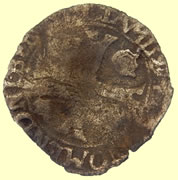 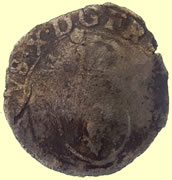 |
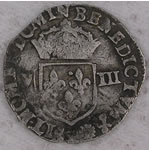 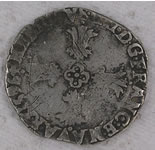 |
||||||||||||||
Charles IX 1560-1574 French hammered silver coin
|
1596 Henri IV Huitieme D'Ecu Obv Henricvs III |
||||||||||||||
French hammered coin made into a brooch
'1298 AD French 'gros tournois" in Philipp's name (P for PHILIPPVS and EX for REX), but on this fragment, it wont be possible to tell which one, 4th, 5th or 6th..'.
ObverseShield with rampant lion left. Legend around it, in three parts Script: Latin Lettering: Translation: Hainaut ReverseLong cross pattée dividing legend. A rosette in each corner Script: Latin Lettering: IOh ANЄ SCO MЄS Unabridged legend: Iohannes, Comes Translation: Count John MintValenciennes, France (1100-1467)
|
|||||||||||||||
German |
|||||||||||||||
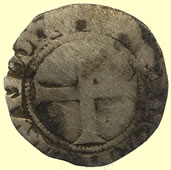 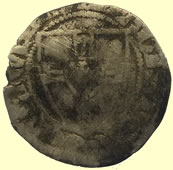 |
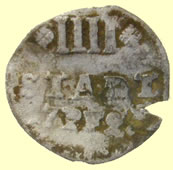 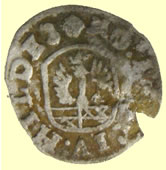 |
||||||||||||||
Obverse |
0.66g,15.49mm HILDESHEIM - Free City, Billon 4 Pfennig, 1720. Obv.: City coat of arms, "MO:NO:CIV:HILDES" |
||||||||||||||
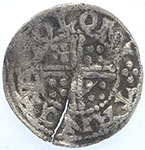 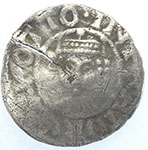 |
 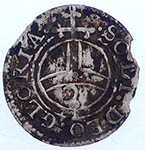 |
||||||||||||||
Pfennig of Otto IV, 1198 - 1218. DEUTSCHE MÜNZEN UND MEDAILLEN GERMANY, Dortmund (Royal mint city). Otto IV. 1198-1218. AR Pfennig (18mm, 1.37 g, 2h). Crowned facing bust / Voided short cross; quatrefoils in angles.
Ohio Drew ID'd it |
Maximilian I as elector (1623-1651)Electorate of BavariaHalbbatzen (2 kreuzer) without date (1623-1637) |
||||||||||||||
India |
|||||||||||||||
|
|
||||||||||||||
1.76g, 9.2mm East India Company |
BRITISH INDIA, Madras Presidency: Silver Vishnu fanam, 1764-1807 8mm,0.85g |
||||||||||||||
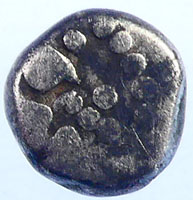 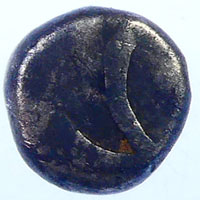 |
|
||||||||||||||
East India Company Double C monogram 0.84g,7.66mm |
18thC Indian debased gold Fanim pendant
Fascinating coin - initially thought is was Saxon silver sceat as the size matches. I do not recognise the markings and have sent it off to Fitzwilliam museum for ID and recording. Is it probably an Indian debased gold Fanim pendant? 1.08g,9.41mm |
||||||||||||||
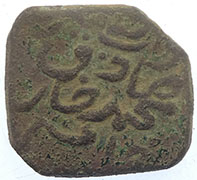  |
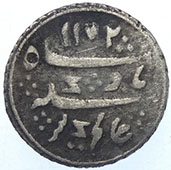 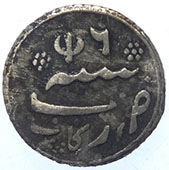 |
||||||||||||||
Unknown foreign coin - researching it Similar coin ID INDIA BAHAWALPUR NAWAB SADIQ V COPPER COIN 1327 |
Unknown foreign coin ID'd by Drew 1/8th rupee of Alamgir II, Madras Presidency, British India, circa 1817-1835. OhioDrew |
||||||||||||||
  |
|||||||||||||||
1823 Madras Presidency (British India) 1/16th silver Rupee |
|||||||||||||||
Italy |
|||||||||||||||
|
|||||||||||||||
Monete di zecche italiane 16.71mm,0.42g
GENOVA Antoniotto Adorno (1396) Minuto hammered silver.ID'd by Virg Phil ObverseGateway with star below, dividing beaded circle and legend at bottom. Legend runs clockwise from lower left, beginning and ending with initials of mint official. Script: Latin (uncial) Lettering: m : IANVA : B Lettering (regular font): ? : IANVA : B Translation: Genoa ReverseLong cross pattée dividing legend and beaded inner circle. Small fleur-de-lis n the quadrant corresponding to CO in legend. Script: Latin (uncial) Lettering: CONRADVS Lettering (regular font): CONRADVS Translation: Conrad (King) MintGenoa, Italy
|
|||||||||||||||
Mallorca |
|||||||||||||||
Another very interesting early hammered Continental copper coin - 2nd one we found over the years - sent off to museum for a help with the ID's - ID'd by Ohio Drew
1 Dinero de Mallorca - N/D - 1665-00 - CARLOS II - Local CoinageObverse : Crowned Bust facing left with I at right; "CAROLVS·II·REX". Reverse : Cross within a circle, |
Right coin ) 1700-1724 Spanien - Mallorca Spain MAJORCA Dobler ND(1700-1724) PHILIP |
||||||||||||||
|
|||||||||||||||
Morocco |
|||||||||||||||
  |
|||||||||||||||
Unknown foreign hammered silver coin - researching it Short summary from what I read - looks like a half dirham of Ibn Abu Mahalli, usurper of the throne of the Saadi Empire in Marrakesh, Morocco. This coin was minted in 1612 or so (he seized Marrakesh in 1612). In 1613 he was defeated in battle and his head was hung from the city ramparts until it disintegrated 12 years later. Ohio Drew |
|||||||||||||||
Netherlands |
|||||||||||||||
1544 Netherlands - Holland solar crown - Gold Dutch solar crown of Charles V, Emperor of the Holy Roman Empire, Count of Holland (1506-1555), etc., 0929 Au, 3.41 g, ø 26 mm, value 42 pence, R1, mint mark Canopy (Dordrecht) 42 stuivers Obv *CARO:D:G:RO.IMP.HISP.REX.DVX.BVR.BR Rev 1554*DA:MIHI:VIRTVTE:COTRA:HOS TES:TVOS: Guelders cross 3.41g,25.5mm |
|||||||||||||||
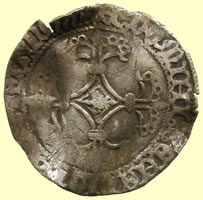 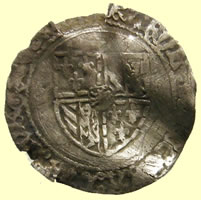 |
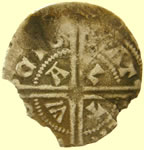 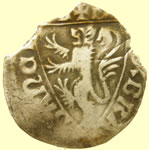 |
||||||||||||||
| 1467 - 1475 Karel de Stoute -hammered silver dubbele stuiver - undated type | BRABANT. Jean I, 1268-1294 AD. AR Esterlin (1.10 gm) of Antwerp. Shield of arms / Voided cross, WALT. VanG.160. dW.242. . |
||||||||||||||
  |
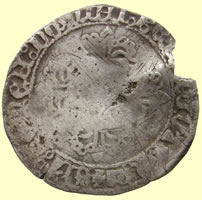 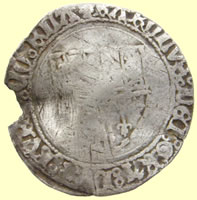 |
||||||||||||||
| 1467 - 1475 Karel de Stoute -hammered silver dubbele stuiver - undated type | 1467 - 1475 Karel de Stoute -hammered silver dubbele stuiver - undated type |
||||||||||||||
|
|
||||||||||||||
| 1467 - 1475 Karel de Stoute -hammered silver dubbele stuiver - undated type | 1467 - 1475 Karel de Stoute -hammered silver dubbele stuiver - undated type fragments | ||||||||||||||
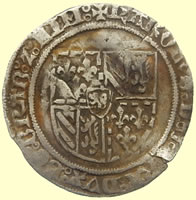 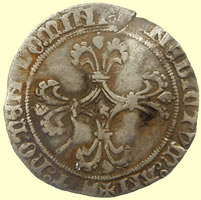 |
|
||||||||||||||
| 1467 - 1475 Karel de Stoute -hammered silver dubbele stuiver - undated type | (1576-1612) Rudolf II. Dutch city Zwole 29.3mm, 4.01g |
||||||||||||||
 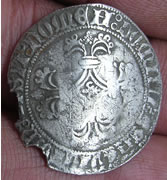 |
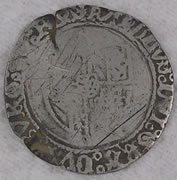 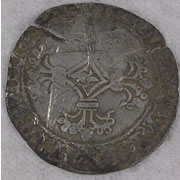 |
||||||||||||||
| 1467 - 1475 Karel de Stoute -hammered silver dubbele stuiver - undated type | 1467 - 1475 Karel de Stoute -hammered silver dubbele stuiver - undated type | ||||||||||||||
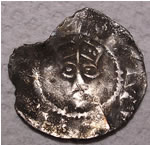 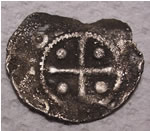 |
 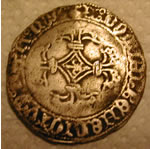 |
||||||||||||||
| 1032 - 1035 AD Tiel Denar Conrad II | 1467 - 1475 Karel de Stoute -hammered silver dubbele stuiver - undated type | ||||||||||||||
 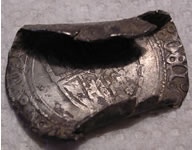 |
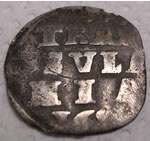 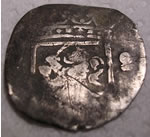 |
||||||||||||||
| 1467 - 1475 Karel de Stoute -hammered silver dubbele stuiver - undated type | Dutch Duit-Overyssel Kampen 1630(y) Rev TRA/ISVLA/NIA |
||||||||||||||
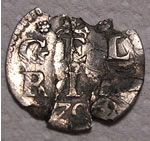 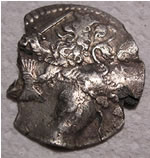 |
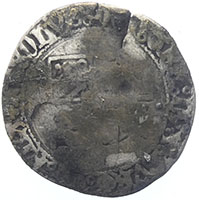 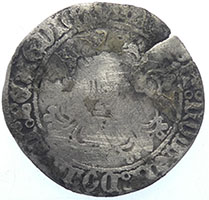 |
||||||||||||||
| 1709/8 double stuiver (2 stuiver) of Gelderland Mint Mark Knight on horse | 1467 - 1475 Dutch Karel de Stoute -hammered silver dubbele stuiver - undated type | ||||||||||||||
 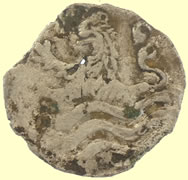 |
|||||||||||||||
| 1681 Dutch Zeelandia milled silver coin - Stuiver | |||||||||||||||
Norway |
|||||||||||||||
 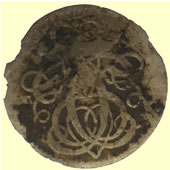 |
|||||||||||||||
1691 Norway under Denmark - 2 silver skillings
|
|||||||||||||||
Ottoman Empire |
|||||||||||||||
 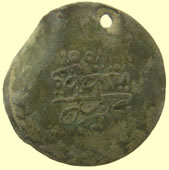 |
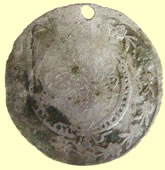  |
||||||||||||||
| 19th Ottoman Empire 5 silver kurush | 19th Ottoman Empire 5 silver kurush | ||||||||||||||
  |
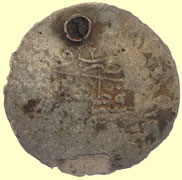 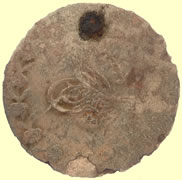 |
||||||||||||||
| 1832
(AH 1223 year 25), 20 Para, Turkey. Ruler Mahmud II. Mintname: Constantinople |
19thC Ottoman empire silver coin | ||||||||||||||
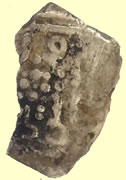 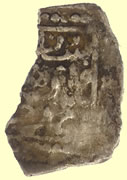 |
|||||||||||||||
13thC Islamic hammered silver coin - recoded on EMC database 0.28g, 14.92mm L x 9.51mm W x 0.72mm T |
|||||||||||||||
Ottoman coin dating site |
|||||||||||||||
Portugal |
|||||||||||||||
|
 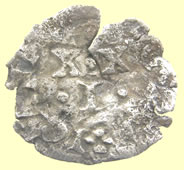 |
||||||||||||||
PORTUGAL.John II 1481-1495.AR.Real (Vintem).Lisbon mint. 18.64mm,1.98g |
1601 AD Portugal 20 Reis silver coin Obverse : IOAN... In the field : I / X.X (I for Iohannes, XX for valor) |
||||||||||||||
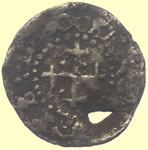 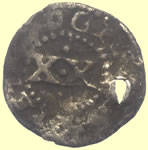 |
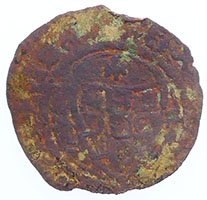  |
||||||||||||||
0.75g, 14.45mm 20 Reis coin of Alfonso VI of Portugal (1656-1667) - here's a picture of a similar one: Can Drew |
ObverseLettering: +ALFOS CEPT ET DOMINO ReverseCastle over waves. Lettering: *REX.PORTUGALIE.ALGA |
||||||||||||||
Spanish |
|||||||||||||||
  |
 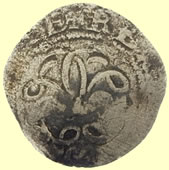 |
||||||||||||||
1474 -1504 Seville, Spain, 1/2 real, Ferdinand-Isabel, mintmark S plus Obv + RCx.C.T:REE.WA.CRST.CSIO Rev RELISH + FERN*****NIS:ET. |
1474 -1504 Seville, Spain, 1/2 real, Ferdinand-Isabel | ||||||||||||||
|
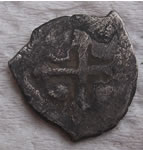  |
||||||||||||||
1474 -1504 Seville, Spain, 1/2 real, Ferdinand-Isabel, mintmark S plus Obv + RCx.C.T:REE.WA.CRST.CSIO Rev RELISH + FERN*****NIS:ET. |
1665 Charles II Spanish colonial 1/2 Real (Mexico city mint) | ||||||||||||||
  |
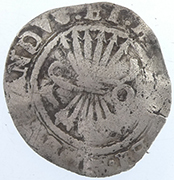 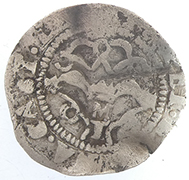 |
||||||||||||||
Spanish Silver 'Half-Reale' Ferdinand and Isabella 1469-1504 Exact ID being researched |
Ferdinand & Isabella Half Real Circa, 1474-1504. Silver Bundle of arrows, +FERNANDVS ET ELISABET D G. R. Flourished crown, M T mint mark below, Toledo mint. | ||||||||||||||
15thC Spanish 8 real 2.76g 26.08mm Ferdinand of Aragon and Elisabeth of Castilla |
|||||||||||||||
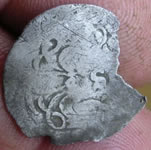 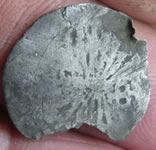 |
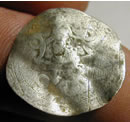  |
||||||||||||||
| 15thC Spanish hammered silver 4 real | 15thC Spanish hammered silver 4 real | ||||||||||||||
Fascinating gilded coin find - fake 1709 gold 2 Escudos 5.09g, 24.1mm Id'd by club researcher Ohio Drew Obverse: cross potent with quartered castles and lions. Border of dots. The legend reads PHILILLUP V D G HISPAN. |
|||||||||||||||
  |
|||||||||||||||
1474 -1504 Seville, Spain, 1/2 real, Ferdinand-Isabel, mintmark S plus Obv + RCx.C.T:REE.WA.CRST.CSIO Rev RELISH + FERN*****NIS:ET. |
|||||||||||||||
1618 Spanish hammered silver half reale, Phillip 1.81g, 18.65mm
1726 Spain 1 Real - Felipe V (Cuenca and Seville) Mudlarking find |
|||||||||||||||
Sweden |
|||||||||||||||
 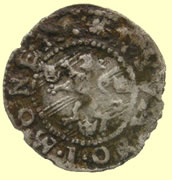 |
|||||||||||||||
1611 Swedish hammered silver 1 ore coin OBVERSE: Sheaf separating letters C.R. in circle and date 1611, legend: REGIS*SVECIA* |
|||||||||||||||
Tunisia |
|||||||||||||||
1 Kharub of Mahmud I from Tunisia. 1167 (Arabic calendar - ~1754 AD). https://en.numista.com/catalogue/pieces113016.html
|
|||||||||||||||
Continental billion hammered silver coin
1660 Continental billion silver coin |
|||||||||||||||
 |
